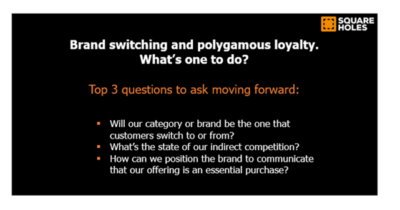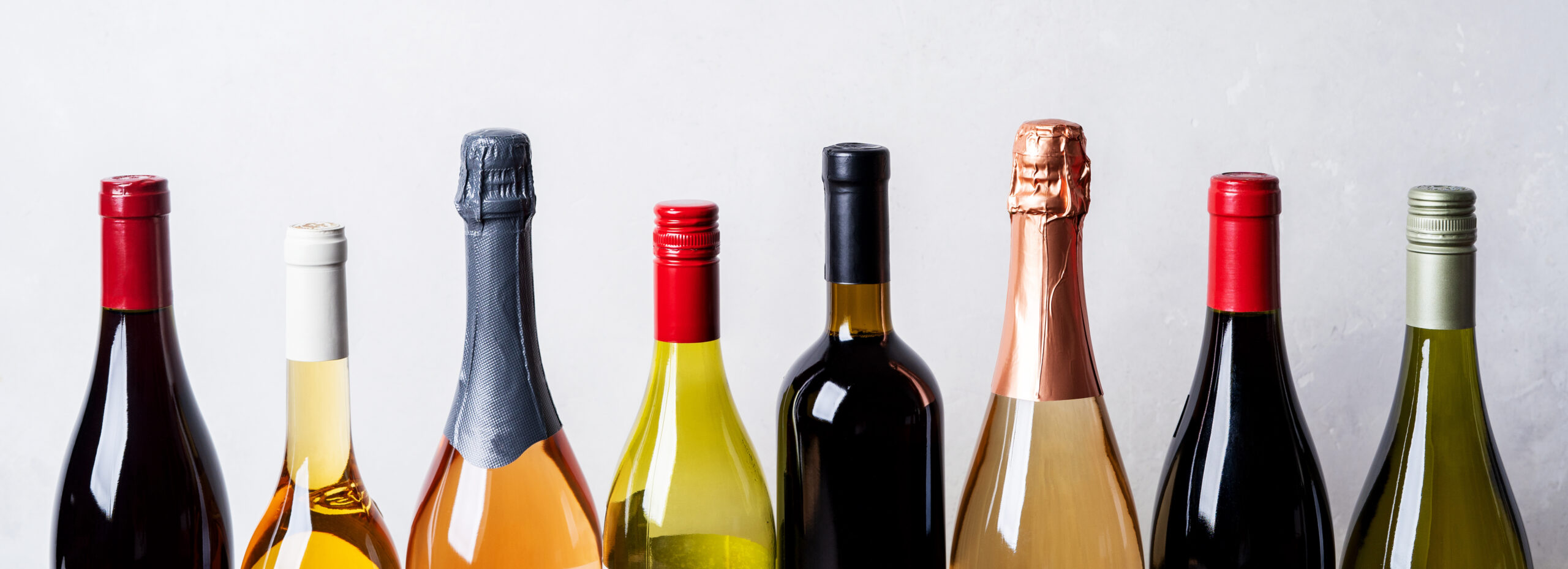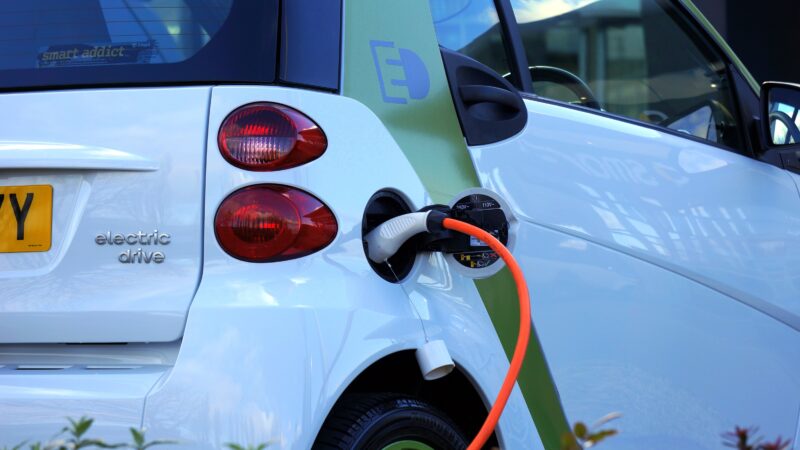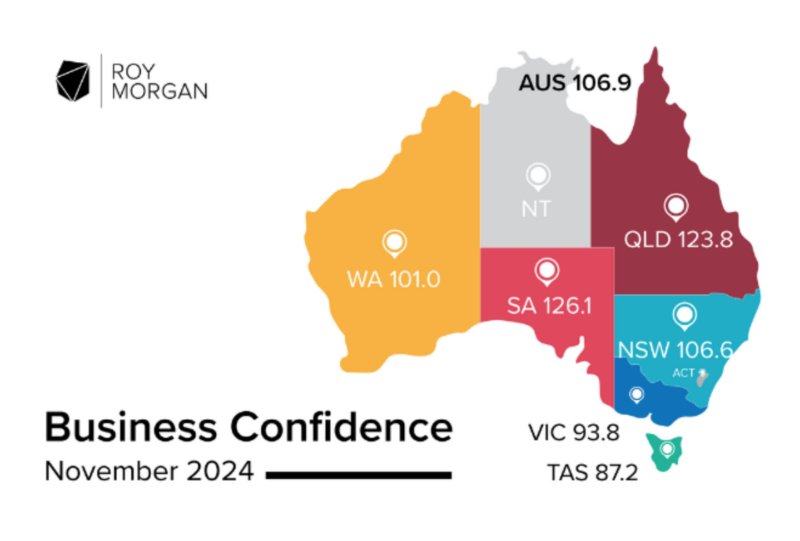Brand switching and polygamous loyalty. What’s one to do?
Over the course of this year, brand switching has been steadily gathering more attention. After all, Australians are now buying 5 to 7 brands of craft beer, on average, as they seek quality and variety. Is category switching next? I got curious about what to make of these conversations, as we start planning for 2023.
A norm or an exception?
Brand switching is quite a self-explanatory term, referring to previously loyal consumers switching one preferred brand for another. Why does it happen? Reasons will vary by product/service attributes (consequence to one’s self-image and wellbeing, financial risk, emotional involvement, and choice) and channel (online vs brick-and-mortar).
But somewhere in the mix of most common drivers of brand switching will be:
- Price-value gap
- Availability
- Variety-seeking
- Customer service
O tempora, o mores! Looking back to 2016, Collinson (formerly ICLP), a global loyalty agency, found that 97% of Australian consumers would ‘cheat’ on their preferred retail brands at some point. Whether you are Byron Sharp’s disciple or not, it is hard to deny that more customers are polygamous when it comes to brand loyalty than many are willing to admit.
What’s new?
In the past three years, we’ve become quite good at switching to adapt: from overseas trips to interstate, from on-campus to on-line learning, from dining-in to takeaway, from cinema to ‘Netflix & chill’.
Following the experiences of reduced availability and delivery disruptions in 2020-2021, more recently Australian consumers have also experienced palpable supply chain interruptions across industries and rising cost of living. Several consumer studies have been released, highlighting the heightened interest of brands in better understanding the impacts of these events on consumer behaviour.

According to the consumer insights barometer by Toluna, in addition to the rising cost of groceries, Aussies are also being impacted by price changes in other areas, like buying clothes (53%) and beauty & skincare products (48%), and electrical goods (49%). At the same time, the spending on vitamins, supplements, healthcare, personal care, and hygiene is expected to increase.
In 2016-2017, the primary reasons for switching FMCG brands in Australia, the UK and the US have been ‘to try something new’ and ‘recommendations from friends and acquaintances’, as highlighted by Statista on the consumption of tea, coffee, decorative cosmetics, body care, and alcohol (wine and beer) in the UK and US, and 2016 Collinson (ICLP) research on Australian retail brands.
In 2021 and 2022 those reasons have been topped by ‘saving money’ and ‘deals on other brands’.
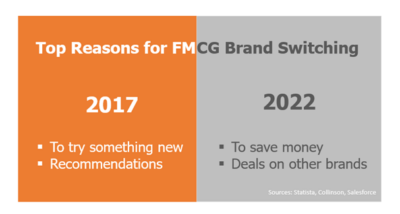
What’s the best response?
Toluna’s results of the September 2022 Global Consumer Barometer (Wave 20) that included a sample of 1016 Australians, among 15 other countries, highlight that consumers have responded to the recent economic and political challenges by:
- Buying extra when items are in stock
- Shopping more often and investing more effort in comparing prices to get the best deals
- Holding on to their subscriptions that deliver value for money, such as mobile and TV
- Experimenting more confidently with new product types
- Visiting more stores in search of value
Several conversion and retention-building tactics can be derived from these insights:
- Sticky brand name and personality (obvious but essential)
- Reward bulk buying (maximising the size of their shopping basket, as customers may not return)
- Designing lucrative deals and making them visible
- Refreshing the product range
- Strengthening relationships with distributors
But I also cannot help but wonder:
Can we anticipate the implications of a larger scale, cultural shifts that manifest across a wider range of industries and categories, on the back of the notable uptake of online food delivery by restaurants and consumers and the changes in grocery spending? As consumers are putting off spending on big-ticket items and reconsider going out as often, could they be finding joy in other ways and purchases?
Having recently undergone a brand refresh ourselves, we have re-affirmed our intention to do good work while having fun. And fun we have, working with a wide range of feel-good brands. Monitoring their performance over time, however, we can’t help but notice a reassessment of how consumers choose to spend their hard-earned money, particularly discretionary income.
Will ‘Netflix & chill’ with a bottle of wine and dark chocolate after a romantic dinner become a lasting replacement to a night out in the city, wherever it takes you? Beyond 2020-2021, confidently growing wine sales suggest there could be something to it, but then stabilising home brew purchases point otherwise. Staying on top of shifts in consumer behaviour across sub-categories and even categories beyond your own is now particularly important.
To sum up, the top 3 questions that I would be asking moving forward are:
